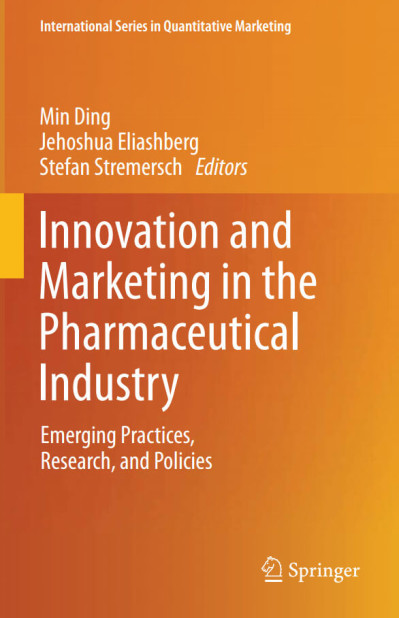 Jehoshua Eliashberg, Marketing Department, The Wharton School, Min Ding, Penn State Smeal College of Business, Songting Dong, Australian National University, and Arun Gopalakrishnan, Olin College of Business at Washington University in St. Louis
Jehoshua Eliashberg, Marketing Department, The Wharton School, Min Ding, Penn State Smeal College of Business, Songting Dong, Australian National University, and Arun Gopalakrishnan, Olin College of Business at Washington University in St. Louis
“Portfolio Management in New Drug Development” (Jehoshua Eliashberg, Min Ding, Songting Dong and Arun Gopalakrishnan) in Min Ding, Jehoshua Eliashberg and Stefan Stremersch, Editors, Innovation and Marketing in the Pharmaceutical Industry: Emerging Practices, Research, and Policies, Springer, 2014, pp. 83-118.
Abstract: The pharmaceutical industry leads all industries in terms of R&D spend. Portfolio management in new drug development is extremely challenging due to long drug development cycles and high probabilities of failure. In 2010, a pharmaceutical company like GlaxoSmithKline (GSK) spent over USD 6 billion in R&D expenditure and managed a total of 147 R&D projects across 13 therapeutic areas in different stages of development. There are a lot of challenges in deciding on how to allocate resources to these projects in order to achieve the maximum returns. For example, how to evaluate the value and risk of each project, how to choose new projects for both short-term cash flow and long-term development, how to decide which projects to prioritize and which projects to remove from the portfolio, how to design drug development unit and incentive schemes to maximize the likelihood of success, and so forth.
This chapter reviews both practice and the state-of-the-art research and summarizes the latest insights from both industry and academia. For a manager, it provides a guide to the tools they need in portfolio management in the new drug development context. For an academic, it provides a quick overview of the extant research and points out some promising research directions.



